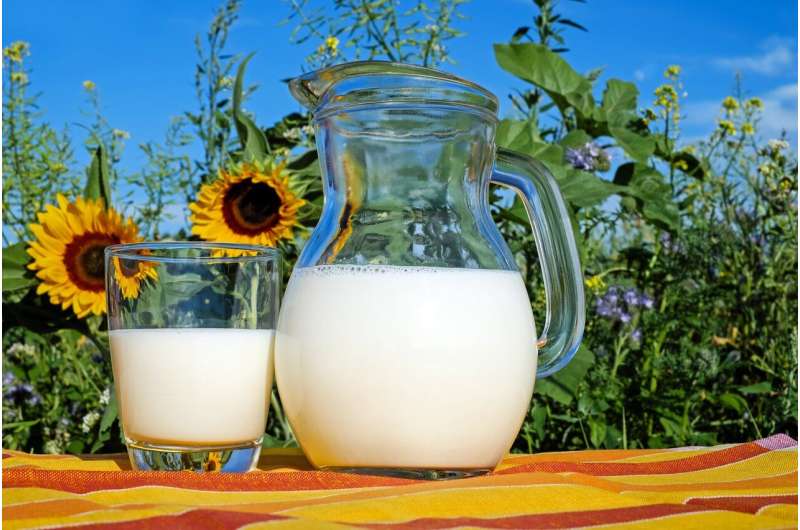This article has been reviewed according to Science X's editorial process and policies. Editors have highlighted the following attributes while ensuring the content's credibility:
fact-checked
peer-reviewed publication
trusted source
proofread
Despite environmental trade-offs, dairy milk is a critical, low-impact link in global nutrition, finds recent analysis

Along with all global sectors, the dairy industry is working to reduce its environmental impact as we look toward a shared 2050 net zero future. Research is currently focused on greenhouse gas mitigation strategies that do not compromise animal health and production, but many discussions maintain that a radical transformation—involving reducing animal-based foods and increasing plant-based foods—is needed in our agriculture production systems in order to meet climate goals.
A group of researchers from Virginia Tech's School of Animal Sciences is working to understand the trade-offs of this kind of transformation. Their new study published in the Journal of Dairy Science, sets out to understand the dairy industry's holistic impact, quantifying the contribution of dairy milk to human nutrition, along with associations with agricultural greenhouse gas emissions and water use.
The study's lead investigator, Robin R. White, Ph.D., explained, "Global-scale assessments of the trade-offs associated with dairy production are required to better grasp the role of dairy in feeding the globe."
White's team noticed that previous investigations of the environmental footprint of dairy systems have incompletely reported on dairy's contribution of critical vitamins and minerals to human health and have often presented outputs in terms of milk weight or energy/protein content only.
White continued, "We were interested in using network analysis methods to better understand the trade-offs between nutrition and environmental impact in the existing food systems, globally."
White and co-author Claire B. Gleason, Ph.D., started with data collected by the United Nations Food and Agriculture Organization, which allowed them to evaluate data at country and continent levels, and to quantify global supplies of different foods as well as the environmental impacts of these systems. All of the data sets used in the analysis are available in the open-access Virginia Tech Data Repository.
The data were then leveraged to better consider global-scale contributions of fluid milk to human nutrition (especially calcium) and the environmental impacts of food production, specifically emissions and water use. Foods were considered in their preprocessed forms only, and fluid milk from each dairy species was included. Total food supply was calculated using a simplified definition accounting for loss, waste, trade, and animal feed. These figures were then used as a reference supply of food that could be consumed by humans, factoring in nutrient requirements based on age and gender.
To understand how milk and meat products are associated with agricultural environmental impacts, supplies were also correlated with greenhouse emissions and blue water withdrawal for watering crops and livestock, using individual country data.
Taken together, the data demonstrate how uniquely critical milk is within the global agroecosystem and to nutritional adequacy of foods produced from that system. Although there are environmental trade-offs associated with milk production, it provides an essential source of important vitamins and minerals, such as protein, riboflavin, vitamin B12, and phosphorus, while requiring relatively low energy.
White added, "Indeed, milk is one of the only low-energy sources of calcium available for human consumption, and our results suggest that 35% of the calcium available for human consumption globally is obtained from milk." Calcium is among the most inadequately consumed essential micronutrients in the world for all countries, regardless of income level.
White and Gleason are quick to point out that there are several limitations to the analysis and that more research is needed. "There are two general types of food systems research. This type considers the structure of the existing food system and how interventions in that system might support objectives like improved sustainability or reduced emissions. Although this approach is grounded in our knowledge of biological and physical constraints on agriculture, it can preclude identification of outside-the-box solutions and is best viewed in complement with the broader body of research."
Considering these limitations, improving global milk availability, including coordinating distribution of milk among supply chains, may be important priorities for enhancing availability of critical nutrients within food systems worldwide.
More information: R.R. White et al, Global contributions of milk to nutrient supplies and greenhouse gas emissions, Journal of Dairy Science (2023). DOI: 10.3168/jds.2022-22508
Journal information: Journal of Dairy Science
Provided by Elsevier




















